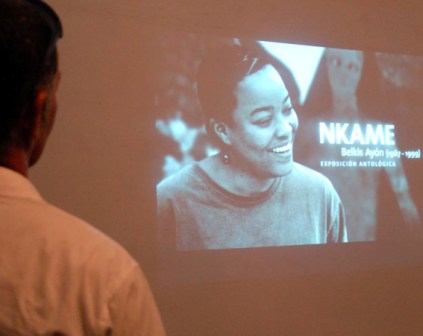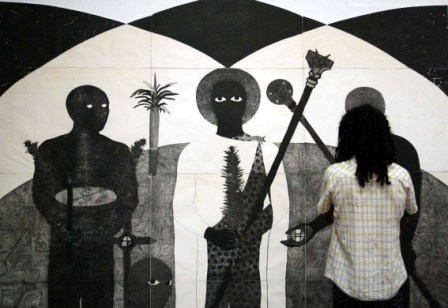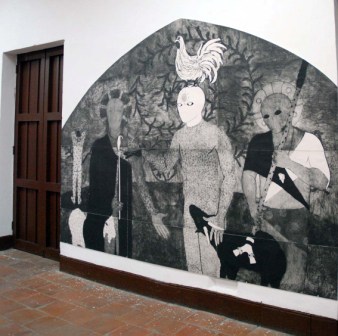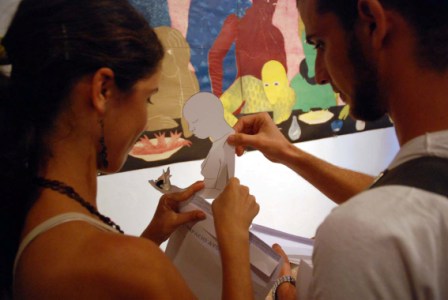The Mystery of Belkis Ayón
By Irina Echarry, photos: Caridad

HAVANA TIMES, Sept. 26 – Many people remember the instant the news came. A question raced through the minds of an entire generation: Why?
In 1999, the painter and lithographer Belkis Ayón decided to end her life. She was only 32 years old but was already one of the most talented and recognized visual artists on the island.
Did Belkis know something she couldn’t’ reveal to us? That question continues to torment many people: critiques, painters, friends and her family.
After ten years, the Belkis Ayón estate – managed by her sister Katia – is offering art admirers and researchers the first anthological exhibit of the artist’s work.
“Nkame” (a synonym for greeting and praise in the language of the Abakuás*, and the title of a book currently being edited) embraces a wide selection of her graphic production between 1984 and 1999.
Several works are exhibited of oversized format, some with dimensions as large as three by four meters, which distinguishes Belkis as a pioneer in the development of the large-sized etchings in Cuba.

“La Cena” (The Dinner) can be seen for the first time, along with the artist’s 1991 black and white version of that piece and the stencil of the original work. In addition, the exhibit includes photographic documentation of events in which Belkis participated, and texts and photos of the artist supersized with photographic quality on canvas.
The show is in Old Havana at the San Francisco de Assisi Convent through November 28. The black and white works are an opportunity to penetrate the personality of the Afro-Cuban “Princess Sikán,” a kind of obsession for Belkis that she constantly represented in attempting to narrate that myth.

Eyes that scan the hall, knees on the floor, woman and man adoring God, fish that hide or jump – her strong images contrast with tender titles: “My soul and I love you,” or “Although we’re going to heaven, they’ll always remember us.”
The figure Sikán discovers the secret that so many males miss, and which they appropriate only after sacrificing her. Based on that legend, Belkis reflected on the human condition, the struggle for survival, love and indifference, life and death. She used it to question her personal experiences, feelings or emotions that were difficult to express.
In her work, the artist incorporated diverse symbology, which are reflected in “colography,” xylography and lithography.
It’s probable that Belkis avoided her destiny, or that she sensed a call from some faraway place where she could meet with Sikán, or that she simply didn’t want us to discover her secret. What is certain is that her work and life open up doors to the imagination allowing us to enter into the mystery.

Click on the thumbnails to see all the photos in this gallery



















